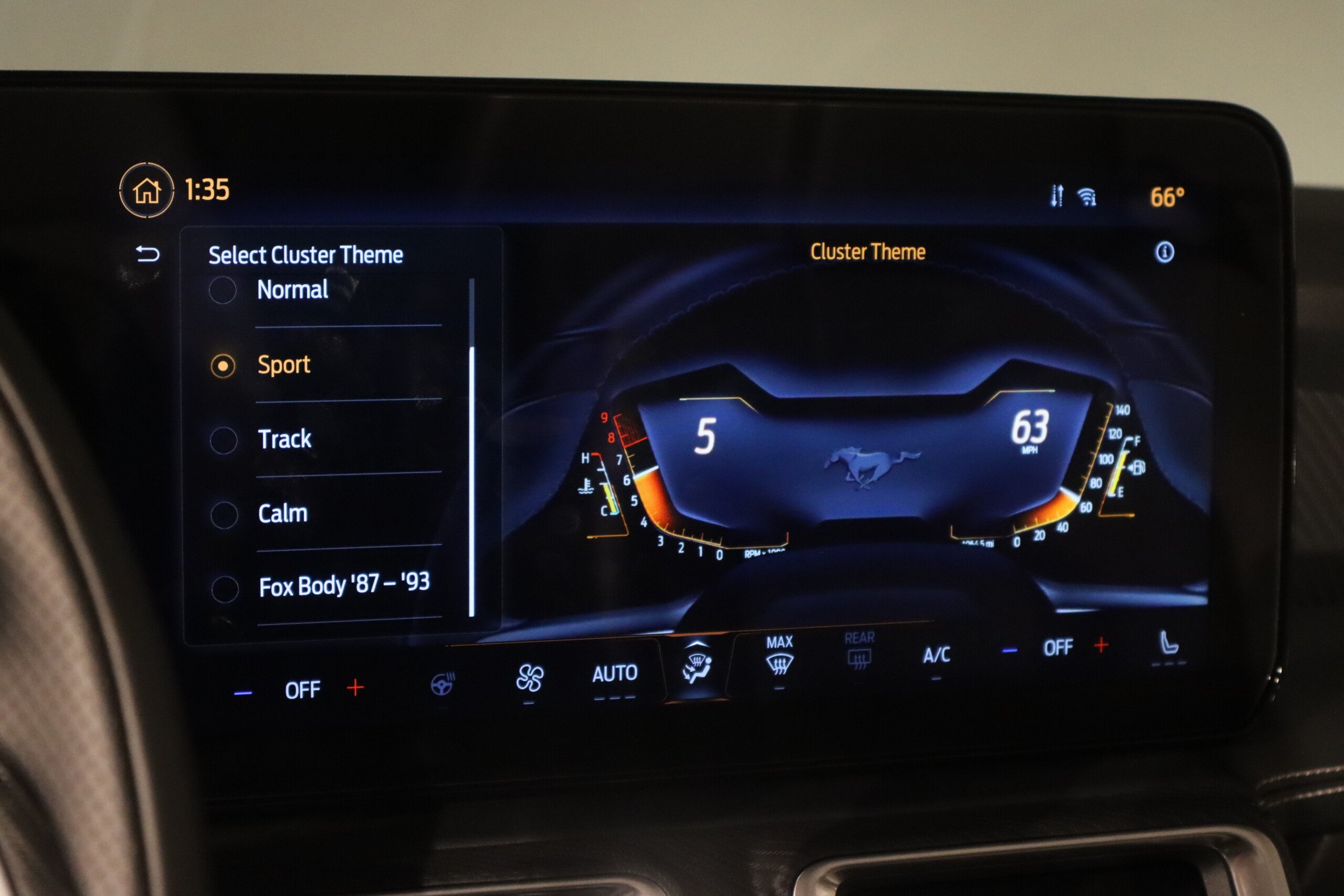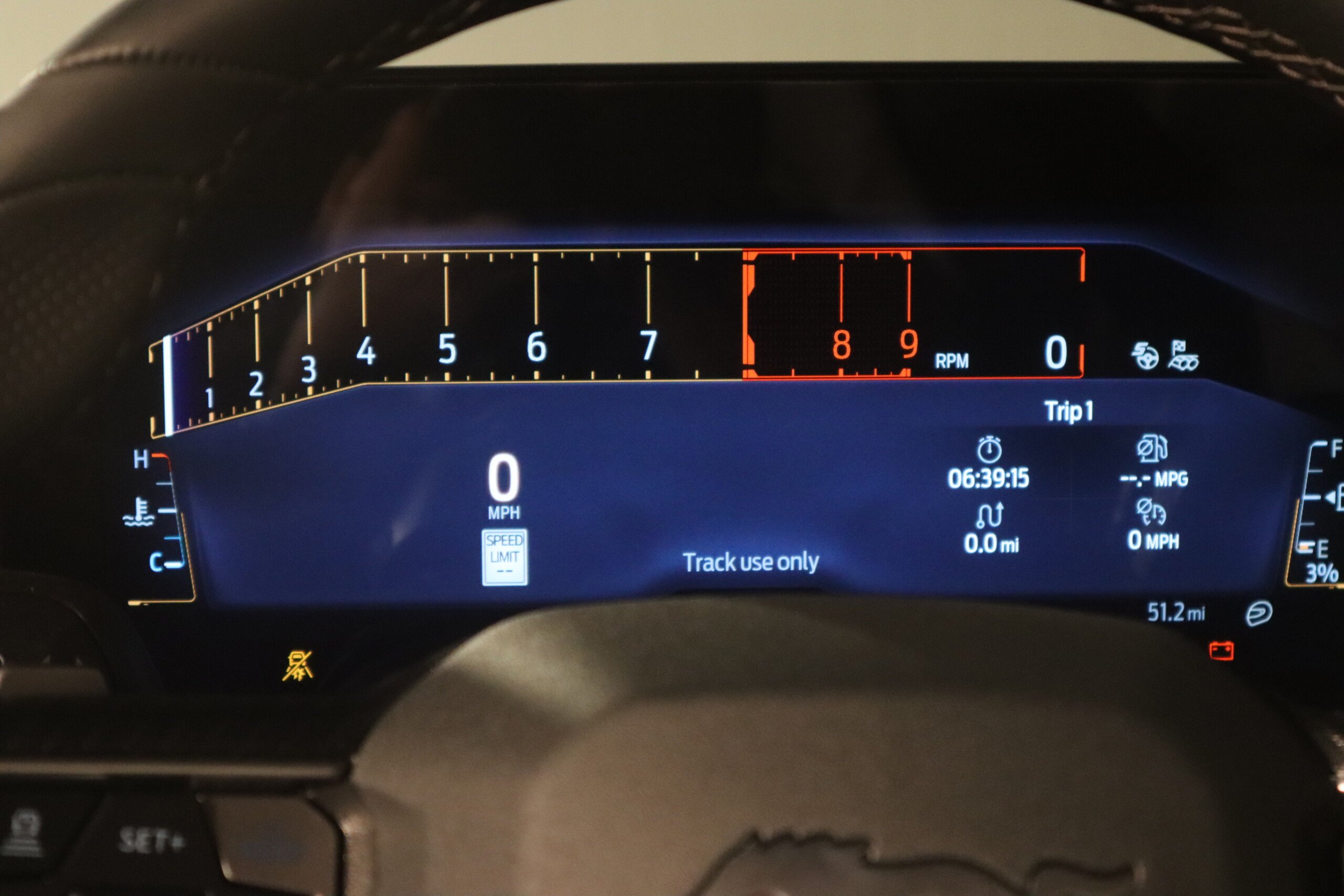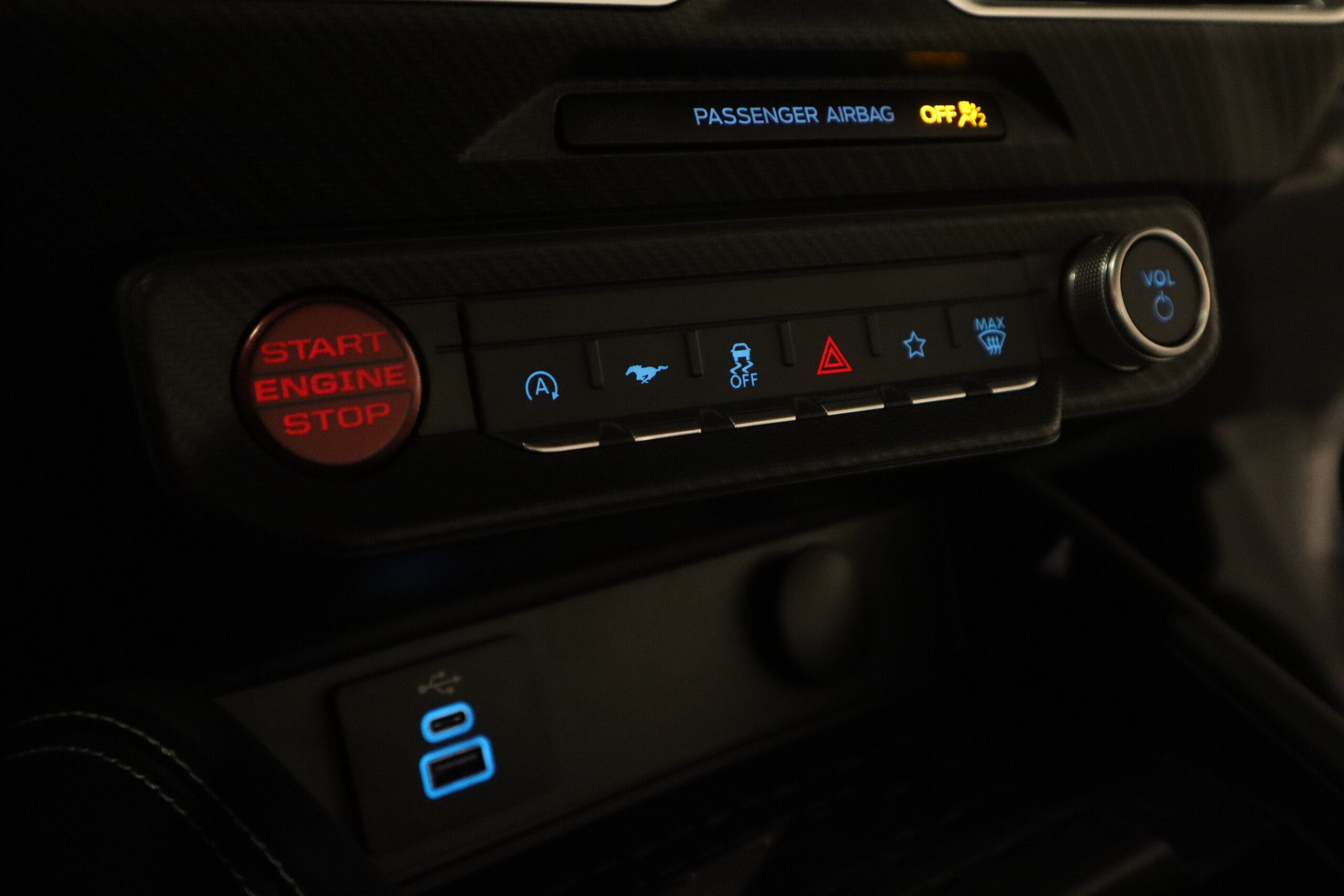When the world met the latest Mustang last September, the exterior styling was probably the most debated aspect of the latest pony car, and the performance offered by the Dark Horse was undoubtedly the most heralded. However, the biggest leap may have taken place inside the S650, and that’s what this author wasn’t quite sure about.
This whole brand-new digital interface, cluster, and center stack, bring it into the modern age and that was all focus derived from the jet fighter. -Craig Sandvig, Ford
Jumping into the modern era with a 12.4-inch digital instrument cluster and a 13.2-inch SYNC 4 center stack — which are integrated under a single panel of glass in all but the base EcoBoost variant — the 2024 S650 Mustang makes an overt outreach to a younger, more tech-centric driver. While the tech is compelling, I wasn’t sure about the styling and integration, so it was thrilling to receive an opportunity to preview this tech at a design studio in the suburbs of the Motor City.
The digital experience inside the 2024 Mustang is both immersive and user-friendly. The displays are beautiful and the controls are intuitive, including the adjustments for the independently adjustable MyColor and Ambient Lighting, which offer 28 color options. You can even customize which gauges are visible by pressing and holding the gauge and tapping through the options.
There we met two of the people who helped create both the hardware and software that brought this level of technology to the Mustang driving experience. As captured in the video above, Craig Sandvig, Design Manager, Digital Product Design went over the basic tenants of the design mission and results, while Ruth Vann, UX Application Supervisor, walked us through the options and user experience of the system before Sandvig delivered a deeper dive into the performance options embedded in the system.
“This whole brand-new digital interface, cluster, and center stack, bring it into the modern age and that was all focus derived from the jet fighter. That’s where the whole experience comes to life in the rider seat. And that’s where Ruth and her team wanted to take the classic Mustang design cues and bring it into this mobile technology age,” Sandvig explains. “So again, appealing to the younger generation, the Gen Zs, the millennials, and that’s where personalization customization, the Unreal technology that Ruth will go through, really brings this thing to life.”
While Ford deployed the SYNC 4 systems with larger screens on previous vehicles, primarily EVs like the Mach-E and F-150 Lightning, moving this technology to the ICE Mustang required tweaking not only the execution and appearance but delivering a uniquely Mustang experience.
You can preview and select the gauge cluster themes via the center stack, as well as make several other adjustments, from Drive Modes to the Line Lock feature. The controls are intuitive and fun in the S650.
“Again, we wanted to really pay attention to the Mustang tenants: appearance, performance, and lifestyle. And one of the first things we did here was change the color of our default color. Today’s car is blue (primary) and gray secondary. We’ve changed it to a copper-like bronze, and then a dark copper-like bronze,” Sandvig explained. “So again, a little bit more progressive, a little bit more performance-oriented. Plus, we’re taking it from the Mustang Mach-E’s Unbridled mode. So there’s a little bit of heritage and keeping it in the proverbial stable but the key here is it’s an experience that comes to life when you get behind the wheel in the driver’s seat. We want to make you feel like you’re in complete control.”
Shedding the Mustang’s traditional double-brow dash to achieve the flow of the two large screens joined under one piece of glass was not a decision taken lightly. The designers and engineers iterated several possibilities before arriving at the final design seen here.
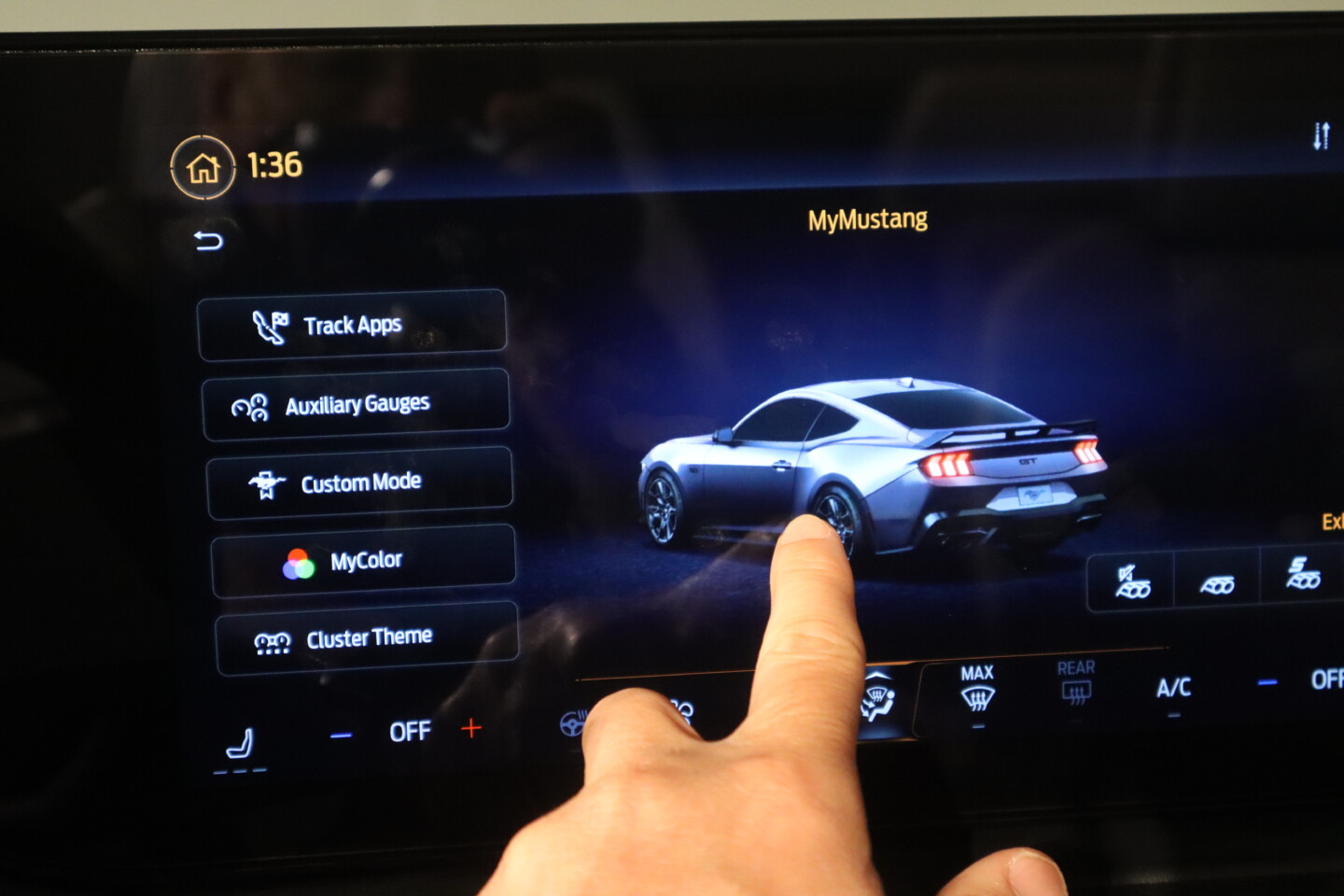
Ford hired programmers with gaming expertise to port Unreal Engine into the 2024 Mustang’s SYNC 4 system. The result is a beautiful visualization of the Mustang, which rotates with a swipe and highlights the system being altered by Drive Mode changes.
“We looked at different sizes that we would put it in a clay — different sizes, different proportions — especially within the hardware we had at Ford, and go ‘OK, does this make sense or does it not make sense?’ The Mustang Mach-E has a really small cluster and a giant center stack. Does that make sense here? No. So that’s where we would actually, again, go back and forth with foam-core cutouts,” Sandvig details. “We took what the graphics could look like and then when we did this one, with a 12.4, that gave us enough pixels to really make it look right with the 13-inch center stack. We looked at portrait, we looked at landscapes we looked at everything. This just feels right. It doesn’t feel too big. It doesn’t feel too small. It feels just right.”
More than just tacking on some large screens to the dash of the S650, the designers and engineers considered both the driver’s access to the controls and the visibility of those displays under many conditions.
“Everything is tilted toward the driver. We also worked with our ergo team on the ergonomics around the veiling glare, especially in really bright rooms,” Sandvig explains. “By tilting the display down just that little bit, you’re not going to get those harsh reflections since you can see the content. So lots and lots of attention was paid to that.”
From biasing the volume knob to the passenger side for easier access for the co-pilot to making the climate controls a permanent fixture along the bottom of the center-stack screen, care was taken to maximize the usability of the system in the S650.
While the push into the digital realm is designed, in part, to reduce the number of buttons and knobs, one of my favorite features is this button bar. A quick push of the pony button takes the center stack screen directly to the MyMustang screen, where the user can quickly make adjustments, including choosing one favorite feature that can instantly be activated with a push of the star button.
And though it shares the same computing hardware as other SYNC 4-equipped Ford, engineers ported the Unreal Engine, which bills itself as “The world’s most advanced real-time 3D creation tool for photoreal visuals and immersive experiences,” to the platform enabling new animations and drive-mode visuals, the latter of which can be rotated with a swipe of the touchscreen.
Watching the screens in use, the experience was relatively smooth and seamless save for the occasional minor glitch in the preproduction software. However, it was sliding under the new flat-bottom wheel to play with it myself was what I truly sought.
Since the S650 Mustangs were running on inverters, I didn’t get the full start-up experience but pushing the power button brought the screens to life. The menus were intuitive, and the Unreal Engine animations were smooth and beautiful. Moreover, the screens were bright and readily visible to the driver.
Changing the drive modes and activating the performance features like the shift light was far more intuitive than in previous Mustangs. However, my favorite part is being able to set one favorite feature to activate at the touch of a button. It could be a drive mode or an exhaust setting that is your go-to. Being able to instantly toggle to a quiet or loud exhaust is a true benefit, and I only wish there were multiple favorite buttons so more settings would be available in an instant.
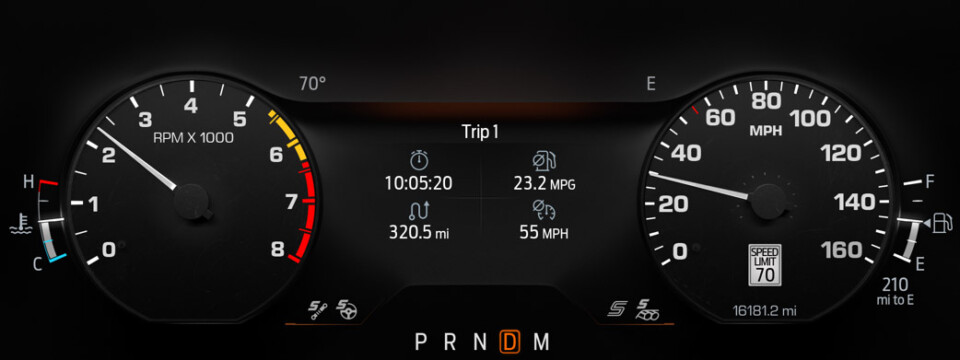
A result of group brainstorming spurred into existence by the current popularity of the Fox Mustang, the ’87-’93 Mustang-style gauge option is retro-cool at its finest. “And the thing that I’m really happy about is we captured that iconic Ford green,” Sandvig says. “It wasn’t just a Mustang green, but we take advantage of the display.”
If you were also skeptical about the big screens, I suspect that some meaningful miles behind the wheel will quickly change your tune. Moreover, this is just the first iteration of this system. It can not only benefit from future over-the-air Power-Up software updates from Ford, and who knows how the technology will evolve moving forward, as the potential is clear.
We can’t wait to experience the system while driving, but that will have to wait for another time. Until then, if a 2024 S650 Mustang is in your plans, I think you are going to like the in-car big-screen experience.
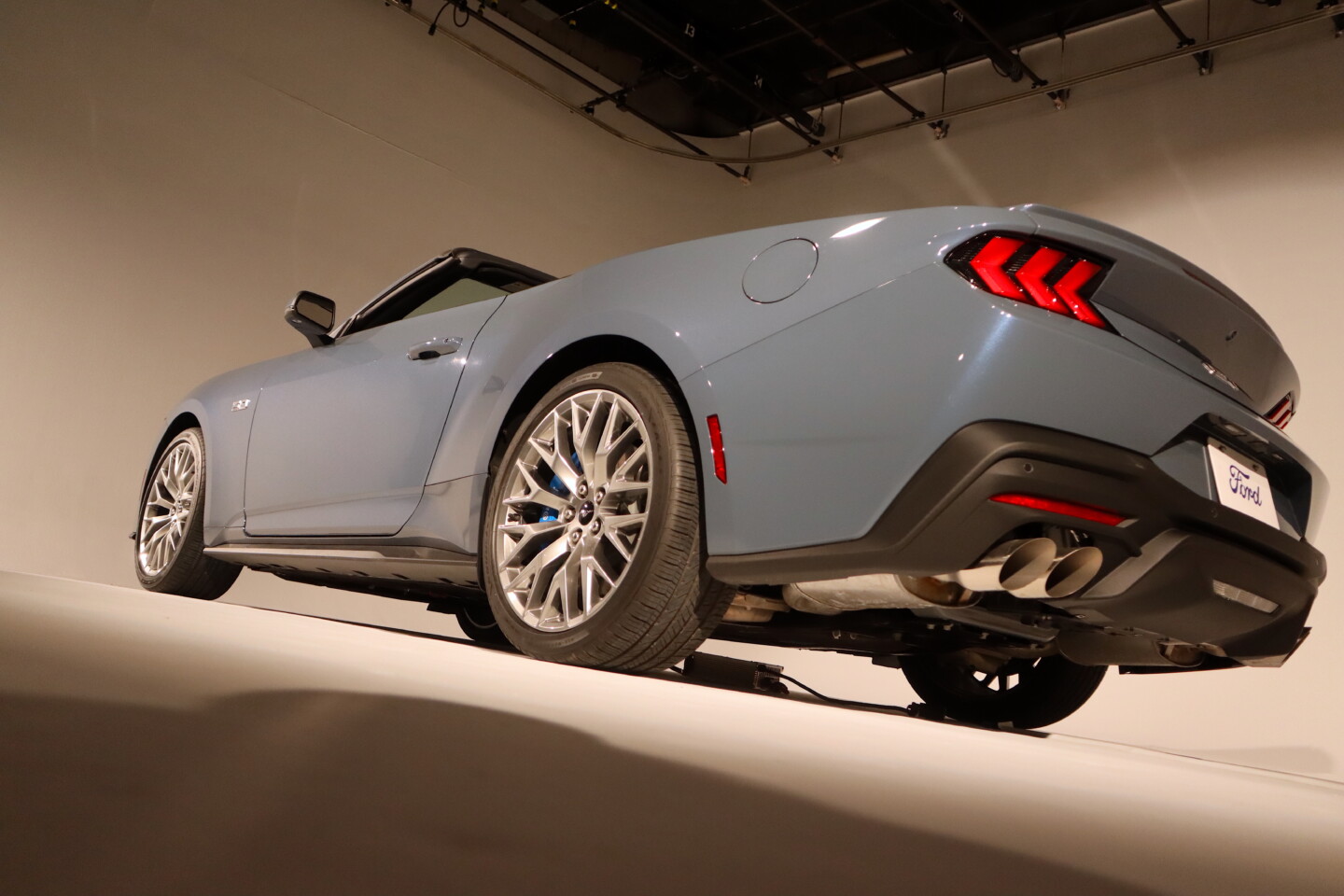
Checking out the digital experience of the S650 also allowed laying eyes on the new Vapor Blue paint option, which looked great accented by optional blue brake calipers.






